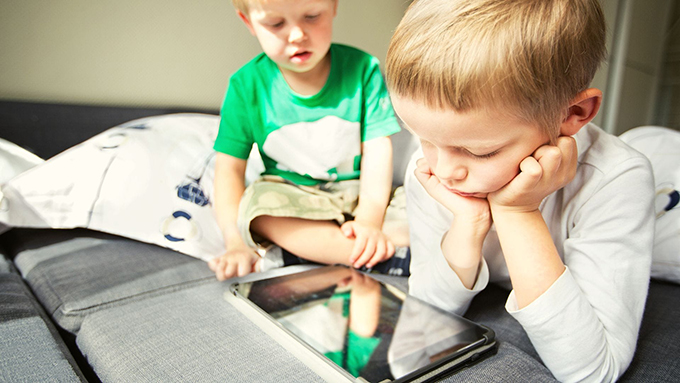
Digital tools are now an integral part of everyday life and lead children to have new experiences and develop in new environments .
The place of these technologies in family interactions can vary depending on a certain number of elements, such as the quality of bonds, family dynamics, the family’s living environment, parental stress, age of children and adolescents…
These tools can create obstacles to communication, which research studies in particular through the concept of technoference, particularly during early childhood and childhood. But they can also constitute new channels of exchange, supporting parent-child exchanges .
This can be done for example through co-viewing content: watching a cartoon with your child, doing an interactive activity on a tablet, reading digital books, etc. Parents then comment on what the child sees and can stimulate their attention. , his curiosity and his vocabulary (even if for this last point, the research results do not all go in the same direction…).
The age of the first smartphone
The place of screens in the family changes as the child grows up. 9 years and 9 months is the average age of acquiring the first mobile phone in France. And we can say that this acquisition brings a turning point in life and communication within the family.
It is often when young people begin to have more autonomy that parents consider giving them a smartphone. Indeed, parents want to ensure the safety of their child, the telephone allowing them to stay in contact with their child in the event of an emergency or need. But the tool also promotes the development of their autonomy and its acquisition is a real developmental step.
However, parent-child communication is also a motivation for this purchase, beyond the aspect solely linked to safety. The possibility of being able to contact their parents or to be contacted by them at any time allows young adolescents to expand their field of exploration, to discover the world.
Digital tools as communication supports
As mentioned previously, communication via digital tools increased as preteens became equipped with them. We could even say that it has become commonplace. Its advantage lies in immediacy, to quickly transmit information or make a request to another, share a moment experienced or emotional states, manage a conflict situation, thus promoting a feeling of closeness .
Communicating by messaging or social networks can also sometimes be a way to say things more easily . It could therefore be easier for some adolescents to send messages to their parents in a more or less “disguised” way, by sharing posts on social networks, or sending emojis to convey their emotions. .
Sharing publications online can also be a way for parents to address subjects perceived as sensitive or taboo depending on the family, for example the relationship with the body, the discovery of sexuality. Parent-adolescent communication can thus be supported by digital tools, and this increasingly as the adolescent grows up and moves away physically from his parents.
Unmissable face-to-face exchanges
Without being limited to this, exchanges between parents and children increasingly take place through messaging, like what we observe in all types of relationships. However, although practical when you are not in the presence of the other, this mode of communication could go against the quality of interactions.
Exchanges mainly through digital tools can give the parent the feeling of being close to their child, without the relationship being really secure, with few possibilities for face-to-face exchanges. Indeed, a significant level of interactions via digital tools can correspond to an attachment relationship where emotions are difficult to share and express directly.
Furthermore, interactions via instant messaging or SMS are generally brief. They are therefore not comparable with a face-to-face exchange where both parent and child can engage in more in-depth conversations, supported by the other’s non-verbal behaviors which can provide information about their emotional states.
Conversation codes to acquire
In addition to the quality of the parent-child relationship, the type of communication present in the family could influence the greater or lesser use of digital tools. For example, in families “ oriented towards exchanges , conversations”, adolescents would use it more easily to exchange with their parents than those from a family little oriented towards discussions.
Adolescents also communicate via telephone or messaging more with their mother than with their father , in dual- and single-parent families, reproducing what we can observe in “in-person” interactions .
As for the reason for communication , it would seem that adolescents, when given the choice, would have a preference for interactions via messages for logistical, organizational and planning issues. On the other hand, if they want to express emotions or seek support, they turn to phone calls instead. Verbal exchanges would indeed allow for better sharing of emotions and a greater feeling of closeness.
Even if messaging services occupy a growing part of parent-child exchanges, face-to-face exchanges (and telephone calls for younger children but not adolescents ) nevertheless remain predominant.
Textual exchanges are important in the sense that they participate in the empowerment process of young people as well as in their learning of exchanges in virtual environments. They can thus acquire certain conversational codes which may be different from the codes in force in “in person” exchanges, for example, becoming aware that the person they are trying to contact by telephone or message may not be available at the same time, learn to respect the times when you can contact a person or not depending on the type of communication…
Author Bio: Marie Danet is a Lecturer in Psychology – HDR at the University of Lille
